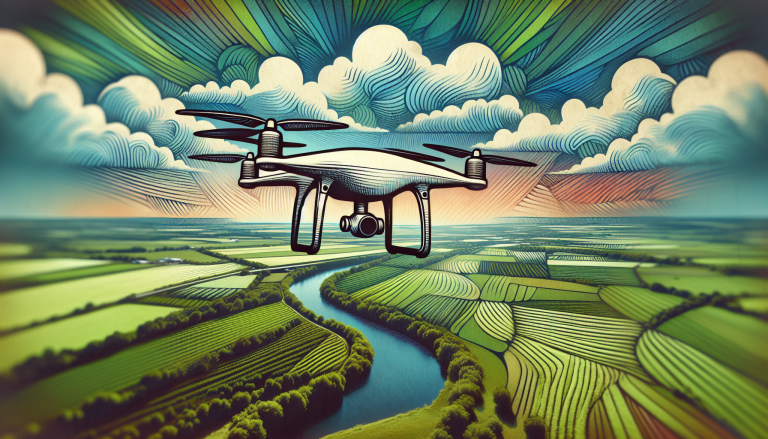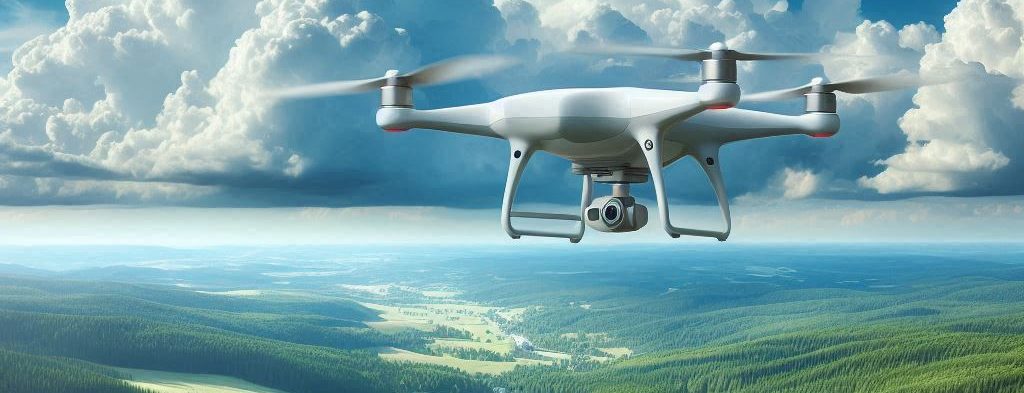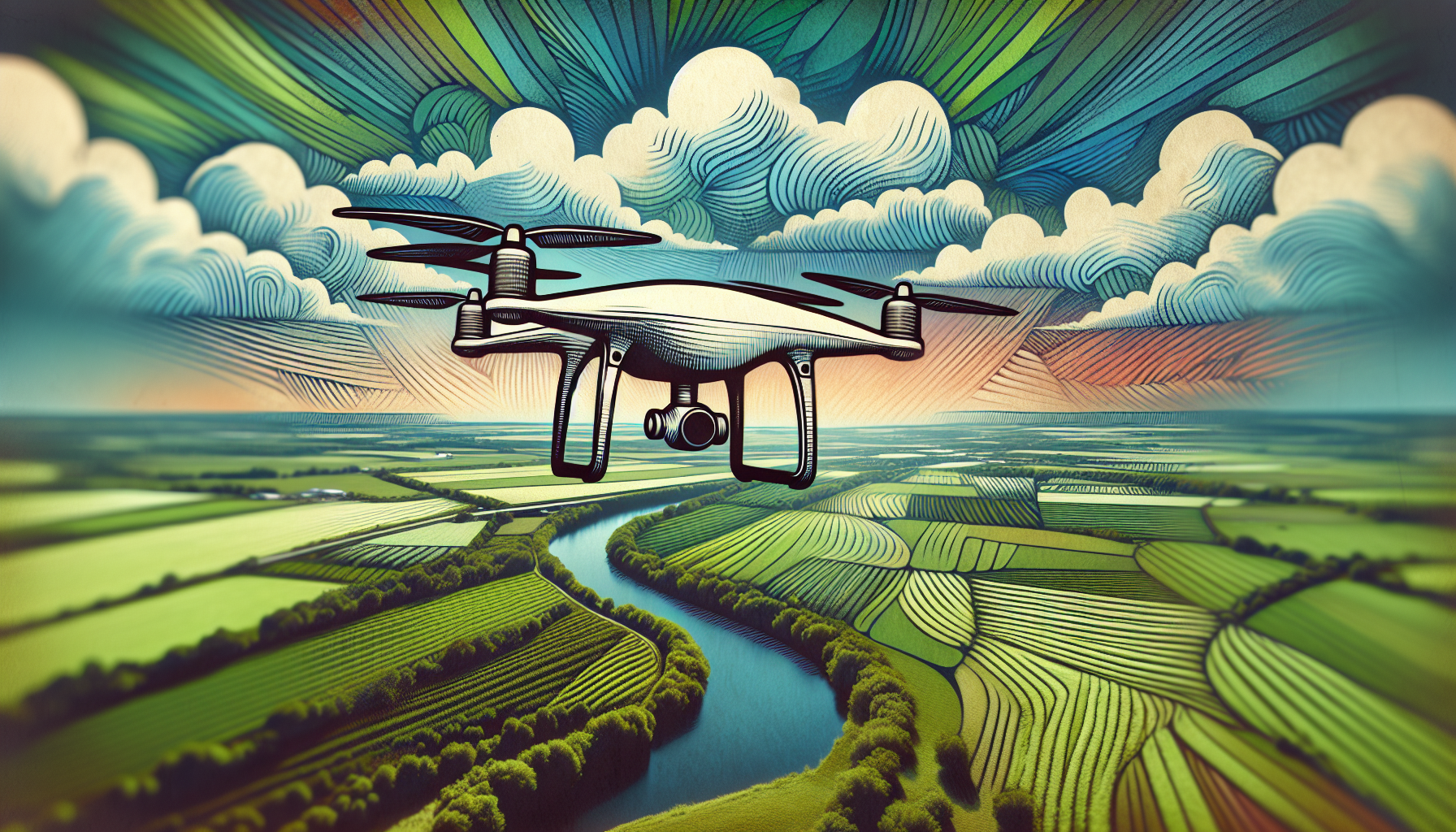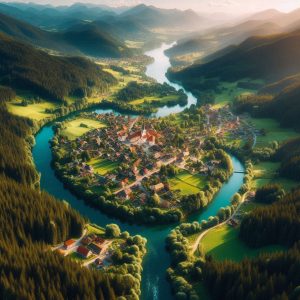Soaring to New Heights: Drones Revolutionize Aerial Photography
As a passionate drone enthusiast, the boundless possibilities of aerial photography have captivated me for years. From breathtaking cityscapes to sweeping landscapes, the bird’s-eye view offered by drones has transformed the way we capture and experience the world around us. In this article, we’ll delve into the remarkable capabilities of these high-tech aerial platforms and explore how they are redefining the art of photography.
Elevating the Photographic Experience
Drones have ushered in a new era of visual storytelling, granting photographers access to perspectives that were previously beyond reach. Gone are the days of relying solely on ladders, towers, or bulky helicopter rentals to achieve those awe-inspiring aerial shots. With the simple tap of a button, drone operators can effortlessly guide their cameras to lofty vantage points, unveiling new and unexpected angles that breathe life into even the most familiar scenes.
“The ability to explore the world from above has unlocked a whole new creative dimension for photographers,” enthuses John, a seasoned drone enthusiast. “Being able to capture the sweeping grandeur of a landscape or the intricate patterns of a city from the sky is truly magical. It’s like discovering a hidden dimension that was always there, waiting to be revealed.”
Pushing the Boundaries of Creativity
Drones have not only transformed the way we capture images but have also inspired a new level of creative expression. Aerial photographers are constantly pushing the boundaries of their craft, experimenting with innovative techniques and compositions to produce breathtaking, one-of-a-kind visuals.

“The freedom and versatility of drones have opened up a whole new world of creative possibilities,” says Sarah, an award-winning aerial photographer. “Whether it’s capturing a breathtaking sunset over a coastline, documenting the intricate patterns of a sprawling city, or creating surreal, abstract images by playing with perspective and scale, drones have truly revolutionized the art of photography.”
One of the most captivating aspects of aerial photography is the ability to reveal hidden patterns and structures that are often invisible from the ground. Drones allow photographers to capture the intricate details and unique geometries that define our built and natural environments, transforming the mundane into the extraordinary.
Overcoming Challenges and Embracing Regulations
While the benefits of drone-powered aerial photography are undeniable, it’s important to acknowledge the challenges and regulatory considerations that come with this cutting-edge technology. As drone usage continues to soar, policymakers and aviation authorities have implemented guidelines and regulations to ensure the safe and responsible operation of these aerial platforms.
“Navigating the regulatory landscape can be a bit daunting at times, but it’s crucial that we, as drone enthusiasts, understand and adhere to the established rules and guidelines,” explains John. “Safety should always be the top priority, both for ourselves and for the general public. By educating ourselves and working closely with regulatory bodies, we can ensure that the incredible potential of drones is realized in a responsible and ethical manner.”
Indeed, responsible drone operation is not only a matter of legal compliance but also a testament to the drone community’s commitment to safety and respect for the environment. Aerial photographers must be mindful of factors such as airspace restrictions, weather conditions, and the potential impact on wildlife and sensitive areas.
Capturing the Extraordinary in the Everyday
One of the most captivating aspects of drone-powered aerial photography is its ability to transform the ordinary into the extraordinary. By offering a unique vantage point, drones can reveal the hidden beauty and intricate patterns that often go unnoticed in our day-to-day lives.
“I find endless inspiration in the seemingly mundane,” says Sarah. “Whether it’s the geometric patterns of a city street, the winding curves of a river, or the organic shapes of a forest canopy, drones allow me to elevate the ordinary and capture the extraordinary. It’s like discovering a whole new world that was always there, just waiting to be seen from a different perspective.”
This transformative power of drones has not only captivated photographers but has also captured the imagination of the general public. Aerial images and videos shared on social media and in galleries have the power to inspire awe, wonder, and a newfound appreciation for the world around us.
Embracing the Future of Aerial Imaging
As technology continues to advance, the future of drone-powered aerial photography is nothing short of breathtaking. Innovations in camera sensors, stabilization systems, and battery life are constantly pushing the boundaries of what’s possible, empowering photographers to capture images and videos of unparalleled quality and resolution.
“The rate of technological progress in the drone industry is simply astounding,” enthuses John. “Just a few years ago, the idea of capturing 4K aerial footage or high-resolution aerial photos would have been the stuff of science fiction. But today, it’s a reality that’s accessible to a growing number of photographers and hobbyists.”
Moreover, the integration of artificial intelligence and machine learning is opening up new frontiers in aerial imaging. Drones equipped with advanced computer vision and autonomous navigation capabilities are poised to revolutionize the way we capture and interact with our surroundings, from seamless object tracking to real-time 3D mapping and beyond.
“The future of aerial photography is truly limitless,” says Sarah. “As drones become more intelligent, adaptable, and user-friendly, the ability to create breathtaking, cinematic footage and awe-inspiring images will only continue to grow. I can’t wait to see what the next generation of aerial photographers will accomplish with these remarkable tools at their fingertips.”
Whether you’re a seasoned drone pilot or a newcomer to the world of aerial photography, the sheer potential of these high-tech aerial platforms is sure to ignite your passion and inspire your creativity. So, let’s take to the skies and embark on a journey of visual discovery, capturing the extraordinary in the everyday and pushing the boundaries of what’s possible with drone-powered aerial imaging.



